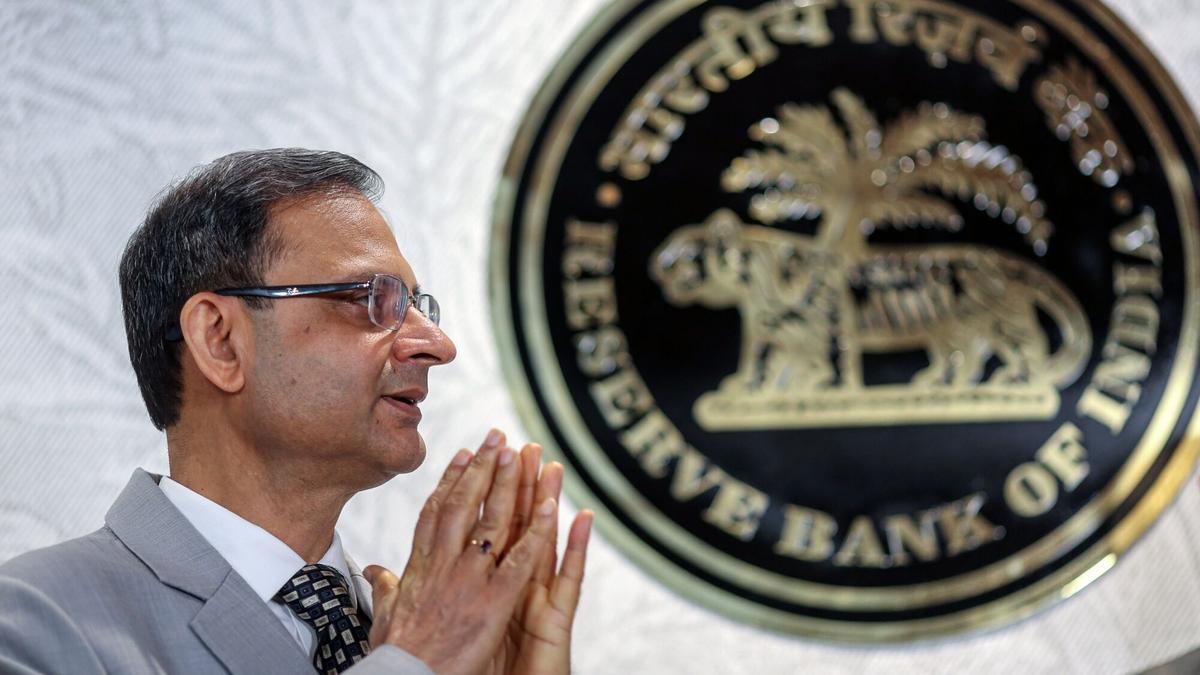
RBI Governor Sanjay Malhotra during a news conference in Mumbai on Friday
| Photo Credit:
DHIRAJ SINGH
While the 50 basis points cut in the repo rate will pressure banks’ net interest margin (NIM) in the next three-four months, the staggered cash reserve ratio cuts of 25 basis points each over four tranches, beginning September 2025, will offset the effect thereafter, say experts.
Referring to the 100 basis points staggered cash reserve ratio (CRR) cut from 4 per cent to 3 per cent, RBI Governor Sanjay Malhotra observed that apart from providing liquidity, it will also reduce banks’ cost of funds and improve their NIMs by about seven basis points.
The CRR cut is expected to provide liquidity to the tune of ₹2.50 lakh crore for banks. The RBI’s rate setting panel has cut the policy repo rate from 6 per cent to 5.50 per cent.
“At least this (CRR cut) should help is our estimate. Why do we provide liquidity? So that there is better transmission, there is faster transmission (of policy rate cut into lending and deposit rates)…,” Malhotra said.
Sachin Sachdeva, Vice President, Sector Head – Financial Sector Ratings, ICRA, said that with 100 bps cut in CRR to be implemented in phases starting September 2025, banks will see a benefit of 3-4 bps on the interest margins for FY26.
“The steep cut of 50 bps in repo rate is expected to sharply impact the net interest marginsof the banks and Q2FY25 is expected to be the weakest.
“Thereafter, the pressure on NIMs is expected to decline with the benefit starting to flow in from CRR cut and extent of cut taken by banks on their saving rate deposits while the term deposit rates will reprice downward with a lag,” he said.
SBI Economists, in a report, noted that banks have reduced fixed deposits (FDs) rates in the range of 30-70 bps since February 2025.
“Transmission to deposits rates is expected to be strong in the coming quarters with further rate cut in deposits expected from banks,” Soumya Kanti Ghosh, Group Chief Economic Adviser, SBI said.
The historical changes in all scheduled commercial banks’ (ASCBs) NIM against changes in policy rates suggest compression of NIM. Exact impact will vary with individual banks, per the report.
“With around 60 per cent of ASCB loans linked to EBLR (external benchmark lending rate), immediate impact on average lending rate would be around 30 bps. However, the reduction in CRR will also cushion the impact of fall in average lending rate with some reduction in cost of fund,” Ghosh said.
Banking expert V Viswanathan said existing loans linked to repo will get immediate benefit of 50 bps.
However, new loans linked to repo may get a benefit of 25-30 bps as credit and tenor premium may be revised to reflect uncertainty in the current environment.
“Loans linked to internal benchmarks like base rate and MCLR may see a reduction of 15-20 bps… Deposit rates may see a decline of up to 25 bps beginning July.
“Most of the banks have reduced deposit rates by 50 bps already. CRR reduction starting from September will address partially the increase in cost of funds for the banks. So they may not transmit the entire repo rate cut on deposits,” Viswanathan said.
Published on June 6, 2025
Anurag Dhole is a seasoned journalist and content writer with a passion for delivering timely, accurate, and engaging stories. With over 8 years of experience in digital media, she covers a wide range of topics—from breaking news and politics to business insights and cultural trends. Jane's writing style blends clarity with depth, aiming to inform and inspire readers in a fast-paced media landscape. When she’s not chasing stories, she’s likely reading investigative features or exploring local cafés for her next writing spot.






